In addition to the ’88 Audi, we also rock an ’06 Jeep Wrangler Unlimited as a daily driver. While 2006 is rapidly approaching 20 years ago, this model Jeep is an early 90’s design through and through, which, when combined with the Wrangler being a more primitive vehicle generally (no power windows/locks/etc), it feels like a real throw-back when you drive it. We got this car when Lisa was pregnant with our first child, as the Miata I had at the time seemed an inadequate vehicle to take the entire family in (also ten North East winters had taken their toll).
I’d had my eye on another Jeep, since my beloved ’86 Cherokee met its end through years of hard use and neglect. So, August of 2010, I found a 4 year old Wrangler Unlimited at the local dealer with 50k miles on it. Perfect!
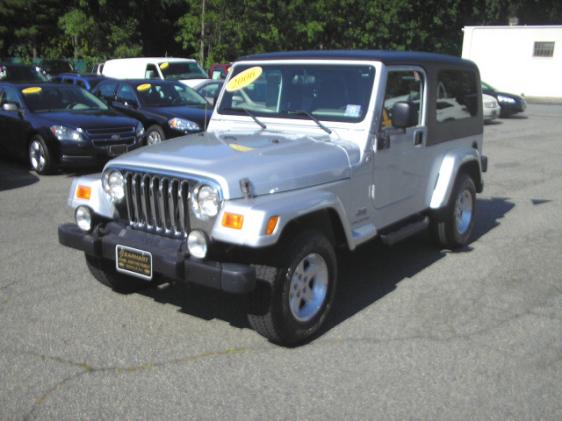
Fast forward to Summer 2023 and it’s everyone’s favorite family car. My children have threatened to disown me should I ever sell it. We take it camping, we take it up forest service roads, skiing, we’ve even towed cars with it. It’s the do everything car for us.
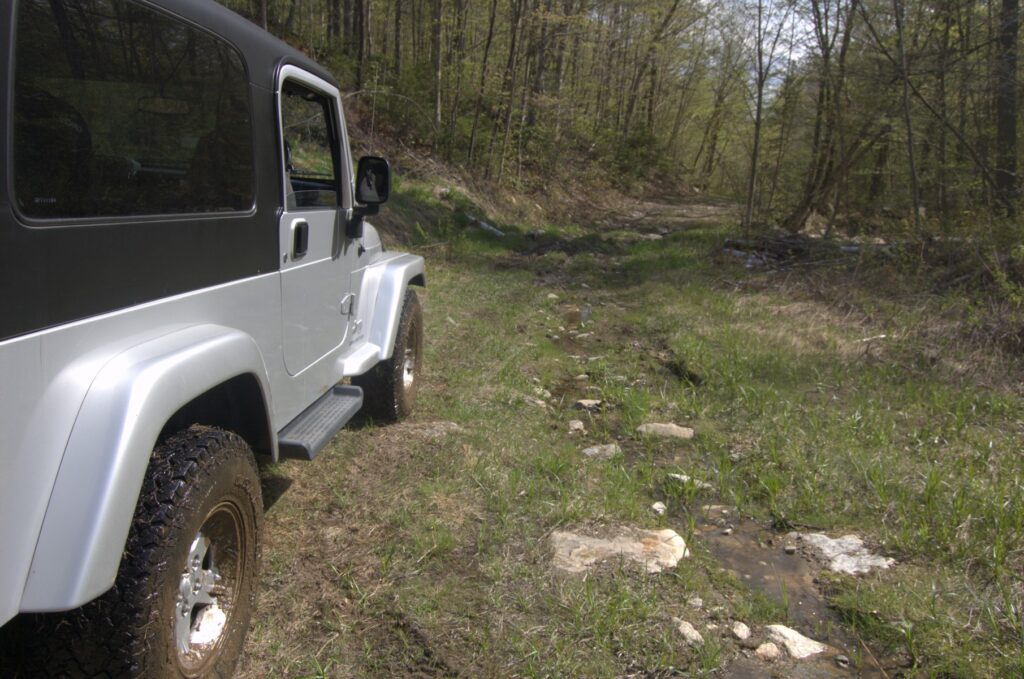
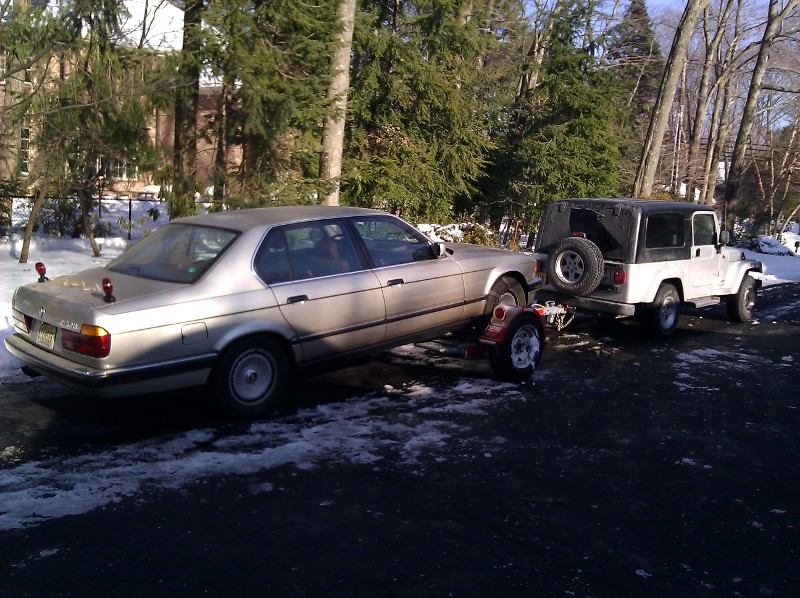
All this doing, has taken a bit of toll, as we’ve now got 195,000 miles on the odometer. Up to this point, it’s required shockingly little in the way of repairs. A couple sets of front sway-bar end links (a consumable on these cars), a couple of U-joints here and there, and general maintenance. That is until spring of this year.
I was at a friend’s house for a Retro Computing Event, and had to move the Jeep to let someone else out of the driveway. Upon walking past the spot where the Jeep had just been parked, I saw a nice little puddle of goo on the ground where back end of the Jeep was sitting. I stooped, I touched, I sniffed. Yep, gear oil…and it didn’t look great. You never want a puddle of oil from your car to glisten in the sun with metallic flakes. Not Good.
Upon getting home, I found that the input shaft seal for the rear differential and both axle end seals had let loose and the rear differential was losing it’s life-blood a few drops at a time. I figured I’d top things up and make a plan of action. With the input shaft seal gone, it was going to take a little doing, but I was mostly feeling up for it. So, I topped up the fluid. Except it wasn’t a “top up” It was basically a full fill. It took over a quart — the total oil capacity is only about a quart and half. NOT GOOD. But, with oil in the diff I vowed to keep a close eye on it.
Two days later Lisa comes home, “The Jeep is making a noise”. VERY NOT GOOD.
So, I take it for a test drive and sure enough — there’s a noise. It sounds a bit like a baseball card in the spoke of a bicycle wheel. Mostly on deceleration, a bit during coasting, but quiet under acceleration. In a fit of total denial, I started checking all the u-joints, even rebuilt the rear driveshaft to no effect.
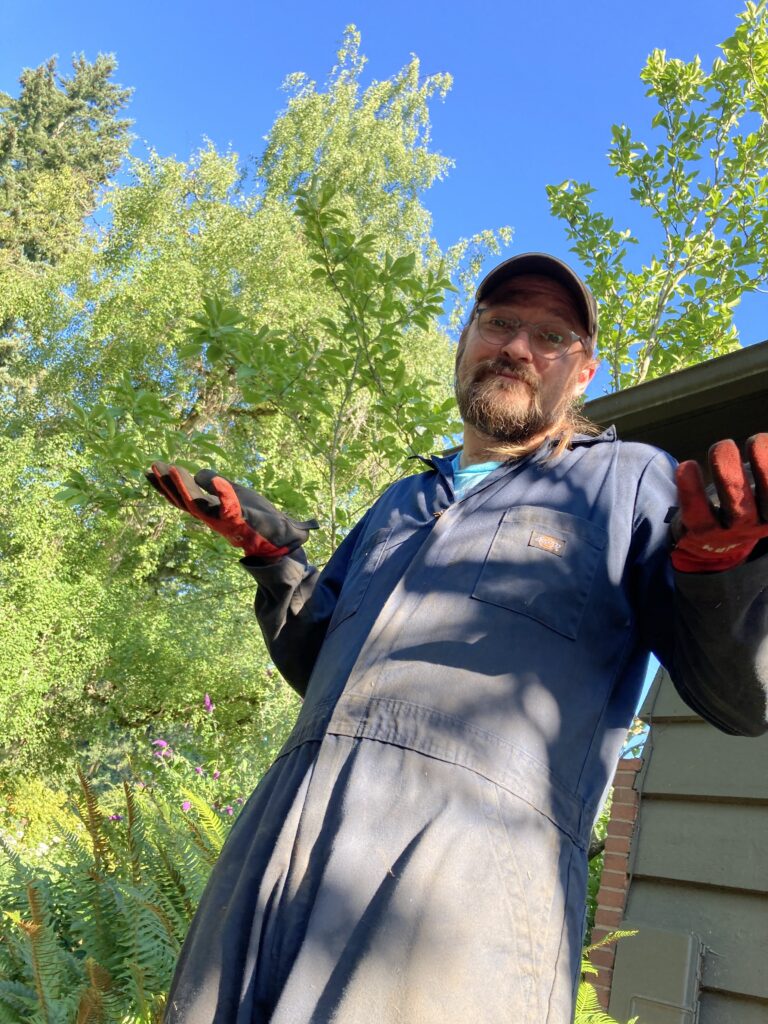
Eventually, I did what I should have done in the first place. I got the Jeep up on jack stands, all four wheel off the ground, put it in gear with the engine running, and crawled under with a stethoscope. Clear as day, with the scope on the differential housing where the driveshaft attaches, I heard it “click click click click click”. Conclusion: we ran it dry and spun a bearing. This means it needs a full tear down. In order to get to that bearing, everything else need to come apart.
So, started asking around the local Jeep community for who they’d recommend for a re-build. I wanted it done right and to never have to worry about it, as I intend to see 395,000 miles on this rig someday. Ronin Ring and Pinion in Marysville, WA came highly recommended. I called, got an estimate (sight unseen, which I appreciated) and made an appointment. Turns out when all you do is differentials, a rebuild on a D44 out of a Jeep is a almost a standard service.
So, once nice sunny Summer afternoon, we topped up the tank and drove the Jeep the 40 minutes North to drop the Jeep off at the guy’s shop, handed over the keys and left. One might think that this is the end of the story and one would be mistaken. This adventure is just barely getting started here.
20 minutes later the phone rings. “Your Jeep wont’ start — is there a trick to it or something?”
Sigh. So we head back to the shop. Brian suggests the fuel pump has pumped it’s last, as the engine did spring to life for a second, died, then nothing. Also, with the high mileage, its a failure mode he’s seen on these many times. Now, the biggest issue with taking it to a specialty shop, is that he’s not setup for (and has no interest in) repairs of the more general type — such as a fuel pump. AAA was called and we made it home on the end of a hook.
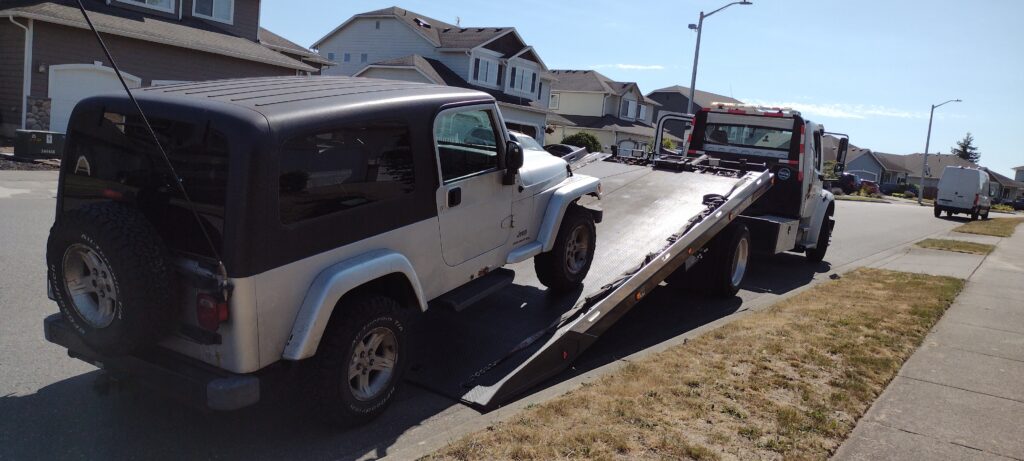

A simple diagnostic checklist for a car that wont run is as follows:
An engine needs three things to run:
1) Compression
2) Spark
3) Fuel
Bonus) All those things need to happen in a properly coordinated fashion.
I immediately ruled out a compression issue, as when cranking it didn’t sound like an engine with no compression. If you’ve ever heard a car start, you know the pulsing row-row-row-vroooom! The “row-row-row” bits are the pistons compressing the air/fuel mixture. An engine with no compression just makes a smooth whirring sound.
To rule out a spark issue, I removed the intake tube off the manifold, squirted a little bit of starter fluid (also known as “ether”) in the intake, cranked it, and it sprung to life for a second as the ether burnt off. Great, fuel delivery issue confirmed. Mechaicjay’s First Maxim: If it runs on ether, it’ll run on fuel.
To confirm a fuel pump issue, I tested the relays and fuses which supply power to the pump and there was no issue there. Given the sudden nature of the issue, the mileage involved and the above diagnostic results, it pretty well confirmed to me that the pump had simply burned out.
Helpfully, to replace the fuel pump in the Jeep (like most modern cars), it’s a tank out procedure. Now, do you remember above, when I said we’d topped up the tank before bringing to the axle shop? Yep. I needed to drop a tank full of 18 gallons of gasoline. I’d also spoken with Brian at Ronin Ring and Pinon and we decided I would pull the axle myself and bring it to him as a carry-out job. The timing of this would out well, as he would able to rebuild the axle while I did the fuel pump. Also, having the axle out of the way, gave me a lot more room to work with the gas tank.
Axle removal was uneventful (just heavy), dropping the tank, however, turned out to be a bit of an adventure. The tank on this jeep is a plastic tank, which sits in a heavy metal cradle (which Jeep calls a skid plate). The skid plate bolts up into the frame and cross members under the jeep. Thanks to a number of winters spent in the North East, every bolt was seized with rust to the point where I needed to CUT THEM OUT. Friends, there are few things in this world I enjoy more than showering a giant bucket full of gasoline, suspended above my head with a stream of sparks from a cutting wheel.
As it turned out, this was process went relative smoothly, without any explody parts, as is evidenced by the fact that I’m typing this and not recovering in the burn ward. With the tank no longer bolted in, and held in place with a couple floor jacks, I was able to lower it gently, removing the fuel and electrical connections. I then needed to scoot the full tank out from under the Jeep, and was able to lift it up on a makeshift platform, to then start siphoning the fuel out of it into totally EPA approved containers.
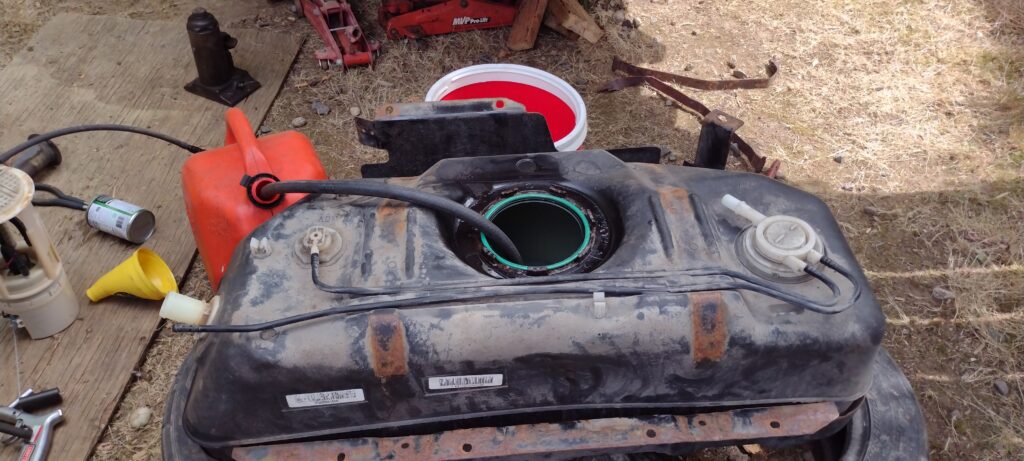
Armed with a new pump and new bolts, I was ready to put everything back together.
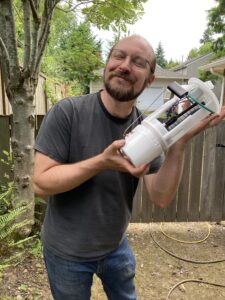
I figured I’d take the plastic tank out of the steel cradle to clean out any debris and to give the the underside a good scrub. It was thick with caked on grease as the bad rear-end seal had ended up coating the skid plate. As I was scraping some rust scale, my screw driver when right through the side of the plate….in multiple places.
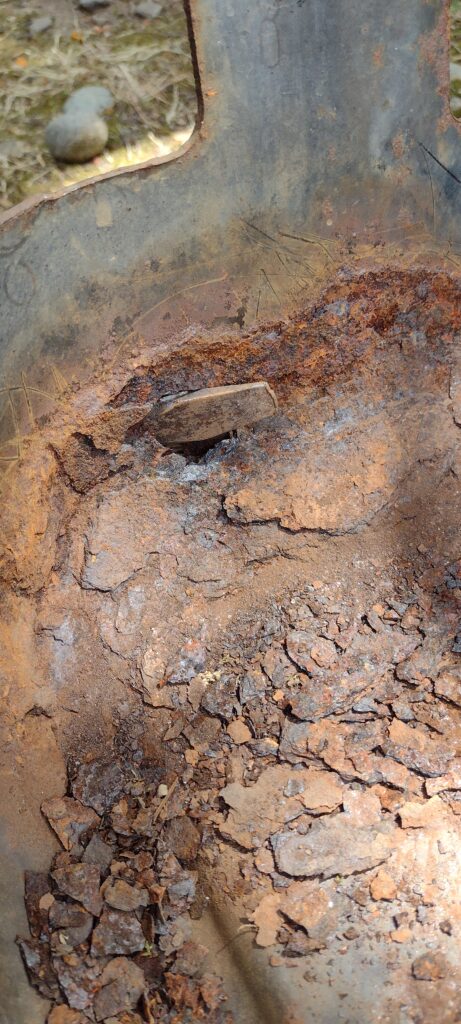
Great, in it for a new skid plate as well. I managed to find a great deal on a stock replacement from amazon, as “refurbished return”, it looked brand new to me when it arrived, so I was super stoked to have saved the $70 or whatever.
Armed, now with a new pump, bolts AND skid plate, I started putting everything back together, which was completely uneventful and smooth, just took a couple hours. Once back together, I refilled the tank from the totally EPA approved storage containers, it fired right up — SUCCESS!
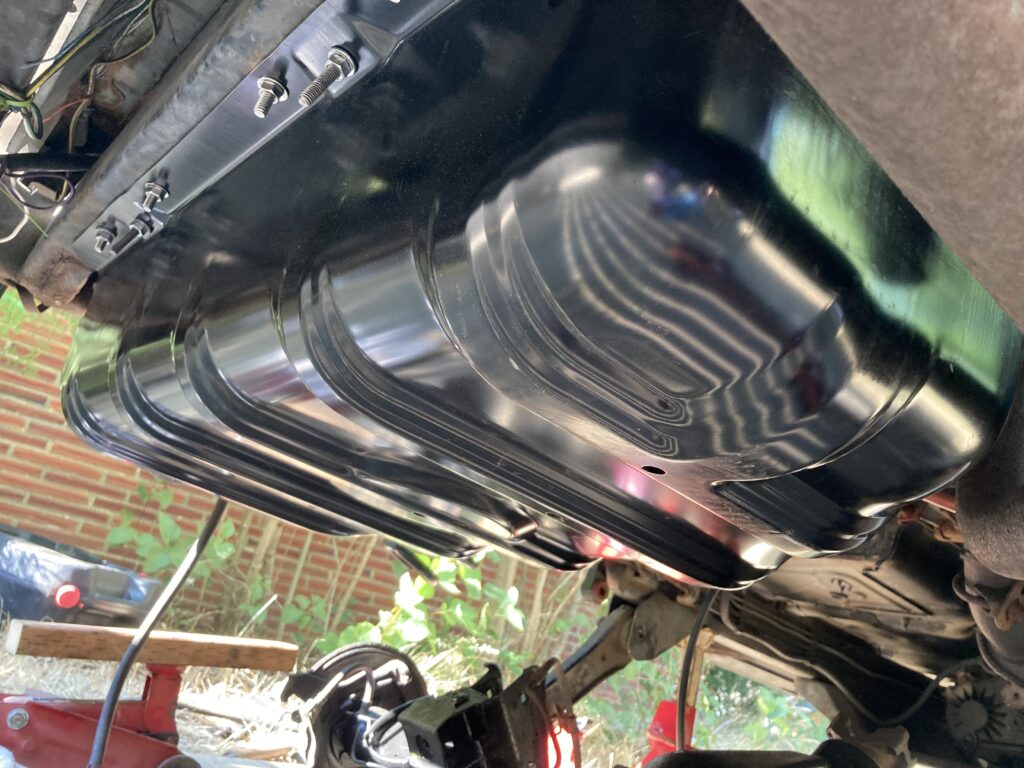
Of course, while all this was going on, I’d heard from Brian and his findings from the Axle tear down. It was of course, the worst case scenario. The only reusable things were the housing and axle shafts. It turns out that the carrier for the limited slip clutch pack had grenaded and were just ping-ponging around inside the axle, breaking the teeth off gears and causing general mechanical mayhem. We had been planning to simply rebuild the factory LSD, but as the carrier was trashed, it was a whole new unit to the tune of an additional $700 OUCH.
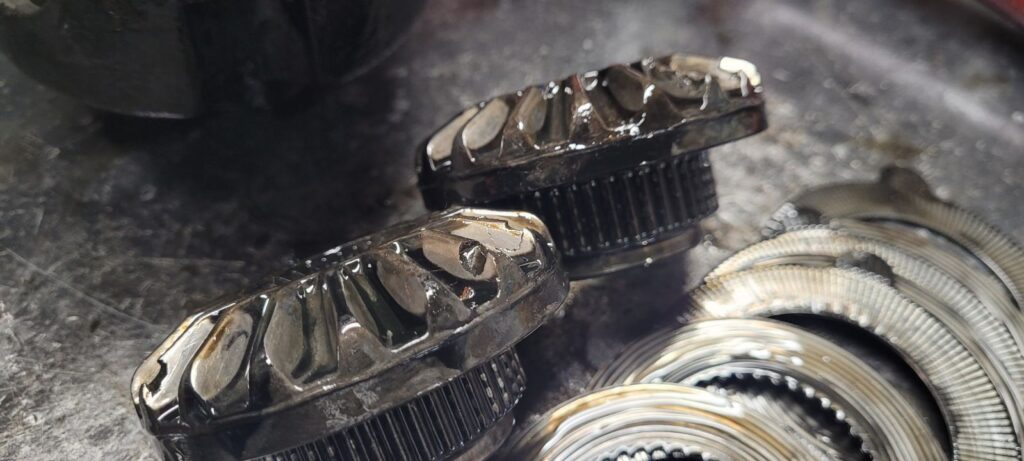
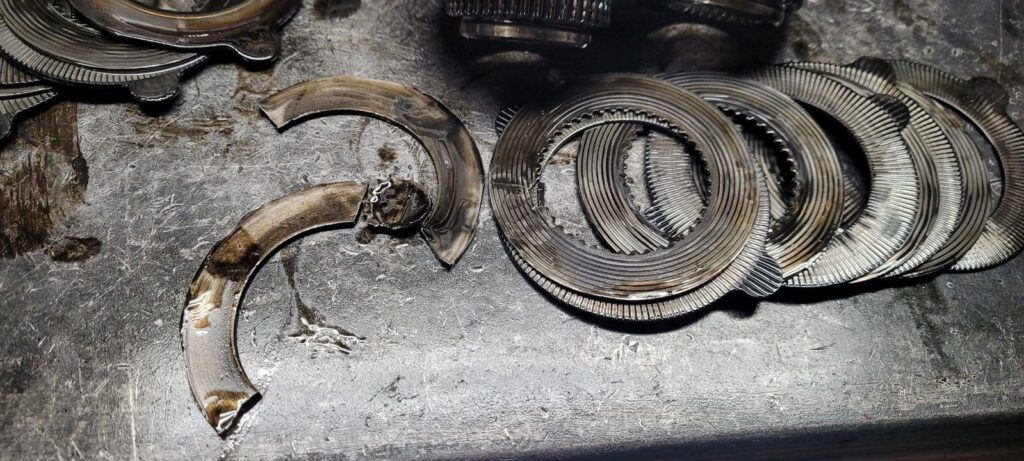
Regardless, once getting the axle back here it just was waiting to go back in once the tank was reinstalled.
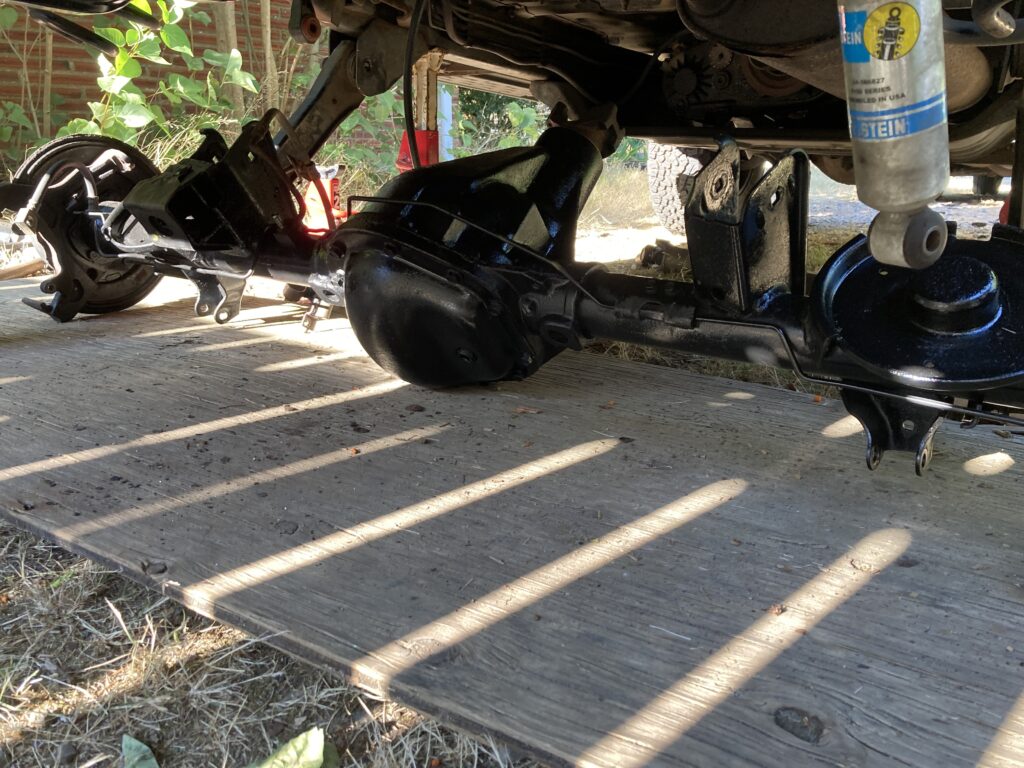
Installation of the azle was similarly uneventful and straightforward, which was also gratifying.
So, now at 195K miles, we’re back on the road with a new fuel pump, skid plate, tank straps, mounting hardware, and a rebuilt rear-end with new ring and pinion gears, spider gears and Limited Slip unit. Hopefully, I won’t need to touch anything else on the back end for a few years!
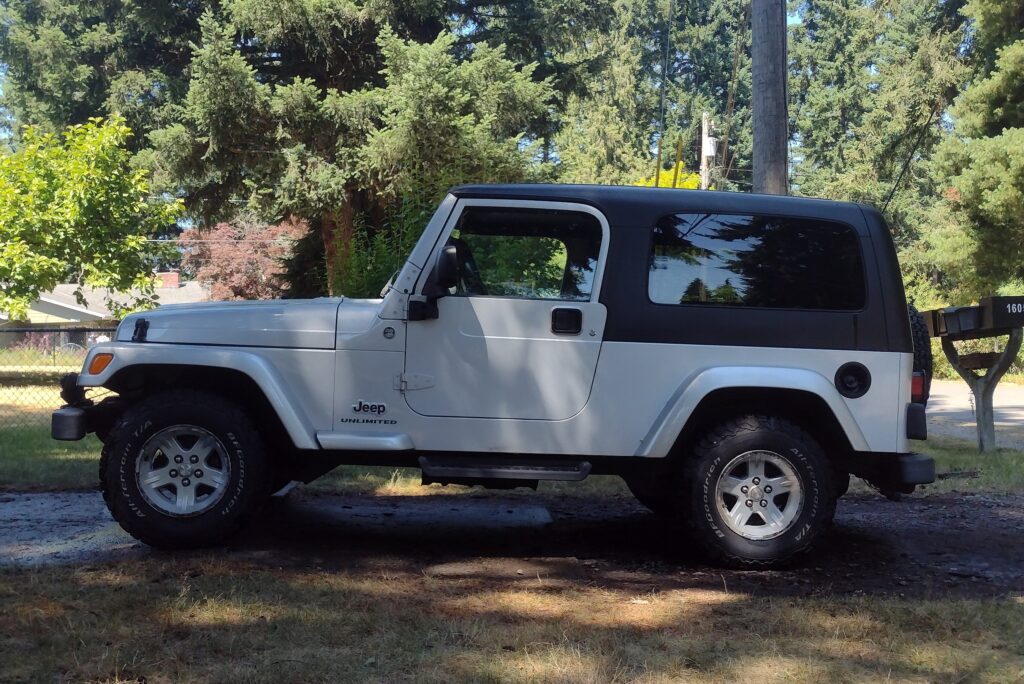

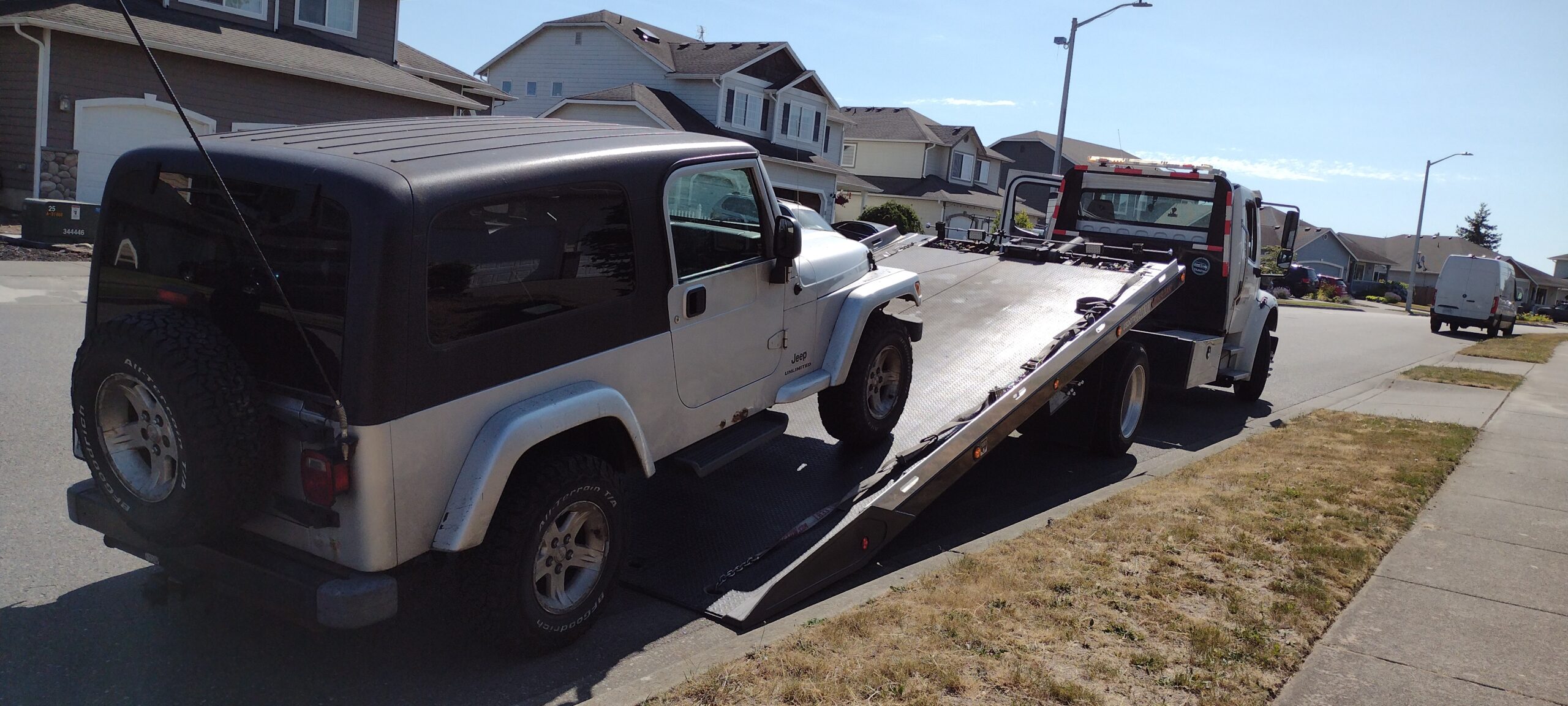
One response to “When it rains…”
Very cool commentary. You make working on cars sound interesting and fun with a wry twist of humor.